TB NOTES

TB Notes 4, 2022
Notes from the Director

Reflecting on 2022, I’m inspired by the continued commitment to eliminating tuberculosis (TB) our partners and TB program staff have demonstrated through another dynamic year. The end of the year marks a time to reflect on achievements, and an opportunity to look forward to future goals. This final issue of TB Notes for 2022 offers a summary of some of the highlights and accomplishments from Division of Tuberculosis Elimination (DTBE) this year. None of this work would be possible without the help of our partners.
DTBE continues to work with state, local and territorial TB programs for screening, evaluation, laboratory services, and treatment of latent TB infection and TB disease among Ukrainians paroled into the United States under the Uniting for Ukraine (U4U) program. DTBE anticipates awarding a second supplement to support U4U in early 2023.
Additionally, DTBE continues to support CDC’s response to the COVID-19 and mpox public health emergencies. Thank you to all who have responded, as well as those of you who continue the important work in TB control and prevention.
CDC recently published Reported Tuberculosis in the United States, 2021, TB data show that reported diagnoses declined by 19% in 2020, a substantially greater decrease than in previous years, likely related to factors associated with the COVID-19 pandemic. Although reported TB cases partially rebounded in 2021, they remain 12% lower compared with 2019.
Finally, CDC announced the four sites selected as TB Centers of Excellence for Training, Education, and Medical Consultation (TB COE) for the new project period beginning January 1, 2023. The TB COEs will support domestic TB control and prevention efforts within their assigned regions.
I look forward to working together in 2023 to continue our mission to eliminate TB. CDC is committed to making TB a disease of the past and is pursuing a dual approach of finding and treating active TB disease while increasing efforts to test and treat latent TB infection among populations at higher risk of TB infection or progression to TB disease. Thank you for your continued partnership and commitment to TB elimination in the United States.
Best wishes for a happy and healthy new year!
Philip LoBue, MD, FACP, FCCP
Director
Division of Tuberculosis Elimination
National Center for HIV, Viral Hepatitis, STD, and TB Prevention
This year, DTBE would like to reflect on the research, innovation, resources, and world events that shaped another momentous year. Here is a look back at some TB highlights for 2022.
Provisional Guidance for the Use of BPaL
to Treat Drug-Resistant Tuberculosis Disease.” image_margin_position=”top,right,bottom,left” image_border=”none” overlay_alignment=”bottom” overlay_width=”50″ overlay_margin=”large” overlay_padding=”standard” overlay_title_size=”standard” overlay_button_position=”left” more_link_color=”bg-primary” image_padding=”none” image_padding_position=”top,right,bottom,left” caption_location=”page” cs_rule=”inherit” mp_action=”none” /]In February, CDC released “Provisional CDC Guidance for the Use of Pretomanid as part of a Regimen [Bedaquiline, Pretomanid, and Linezolid (BPaL)] to Treat Drug-Resistant Tuberculosis Disease.” The provisional guidance includes considerations for clinicians, dosing and administration, precautions and adverse event monitoring, microbiologic monitoring, and more.
CDC encouraged clinicians, pharmacists, and public health professionals to review the provisional guidance. Clinicians can contact state and local TB control offices and the TB Centers of Excellence for Training, Education, and Medical Consultation for additional information on diagnosing and treating drug-resistant TB disease.
CDC Releases Interim Guidance on a Four-month TB Treatment Regimen
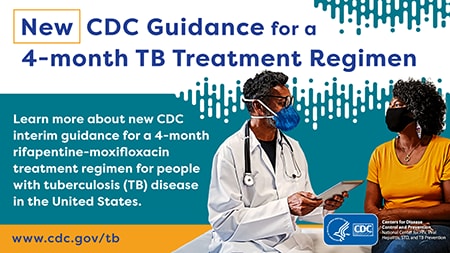
On February 24, 2022, CDC released new interim guidance in Morbidity and Mortality Weekly Report for a 4-month treatment regimen to treat drug-susceptible TB disease in the United States. The 4-month rifapentine-moxifloxacin regimen, which is as effective as the standard 6-month regimen for TB treatment, is a treatment option for people 12 years of age and older with drug-susceptible pulmonary TB disease in the United States. The 4-month treatment regimen consists of high-dose daily rifapentine with moxifloxacin, isoniazid, and pyrazinamide for 8 weeks, followed by 9-weeks of daily rifapentine, moxifloxacin, and isoniazid.
Think. Test. Treat TB

On March 15, 2022, CDC launched the Think. Test. Treat TB campaign, which aimed to raise awareness about latent TB infection, risk, and the link between latent TB infection and TB disease by encouraging Asian Americans and their healthcare providers to:
- Think about the risk factors and talk about TB
- Test for TB infection
- Treat latent TB infection to prevent the development of TB disease
The Think. Test. Treat TB patient and provider education materials are available in Chinese, English, Ilocano, Marshallese, Spanish, Tagalog, and Vietnamese. The Campaign Resource Overview Guide provides a list of available graphics, fact sheets, and other materials. Print materials are available to order for free through CDC INFO on Demand.
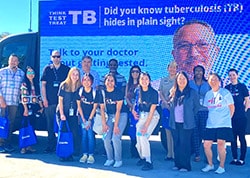
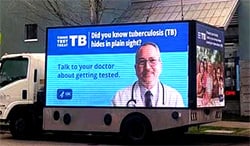
Think. Test. Treat TB materials have been spotted in Seattle, Washington, and Los Angeles, California. Mobile ads were spotted outside the International Community Health Services clinic in Seattle. The TB team from Los Angeles Department of Public Health spread the Think. Test. Treat TB message in their community as part of World TB Day activities.
The campaign continues to raise awareness about latent TB infection, risk, and the link between latent TB infection and TB disease among Asian Americans and their healthcare providers. Since its launch, the campaign website has over 55,000 total page views and over 2,000 resource downloads.
World TB Day
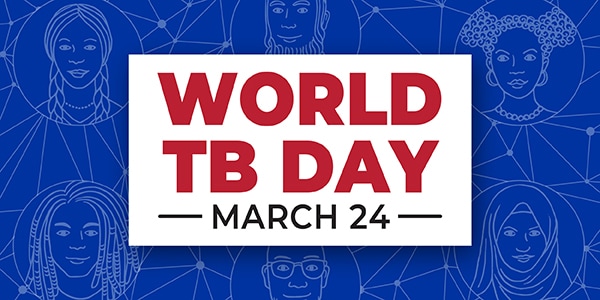
On March 24, DTBE recognized World TB Day, an annual event to commemorate the date in 1882 when Dr. Robert Koch announced his discovery of Mycobacterium tuberculosis, the bacillus that causes tuberculosis (TB).
Partners who hosted events around World TB Day were featured on the World TB Day Events Timeline. For the CDC U.S. TB Elimination Champions this year, CDC recognized organizations and individuals in the TB prevention and control community who demonstrated health equity principles in their work to eliminate TB.
Additional activities included a Dear Colleague Letter from CDC Director, Rochelle Walensky, MD, MPH, highlighting the importance of timely diagnoses of TB disease and encouraging programs to regain the momentum lost due to the COVID-19 pandemic to end TB in the United States, a Digital Toolkit, and more.
Uniting for Ukraine
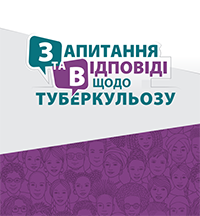
On May 21, 2022, President Biden signed into law emergency supplemental appropriations (Public Law 117-128) that included funds for medical support, screening, and other public health activities related to populations displaced from Ukraine. Under the Uniting for Ukraine program, an estimated 100,000 displaced Ukrainians are expected to arrive in the United States. Shortly after arrival, Ukrainians participating in the program must meet specific health requirements, including vaccinations and TB testing.
To support this effort, in August 2022, DTBE awarded nearly $8 million in supplemental funding under CDC-RFA-PS20-2001 to currently funded states, cities, and territories for screening, evaluation, and treatment of latent TB infection and TB disease among Ukrainians paroled into the United States. CDC anticipates awarding a second supplement to support Uniting for Ukraine in Fiscal Year 2023. For more information and for TB resources in Ukrainian and Russian, please visit Uniting for Ukraine: Information for TB Programs.
2022 National TB Conference
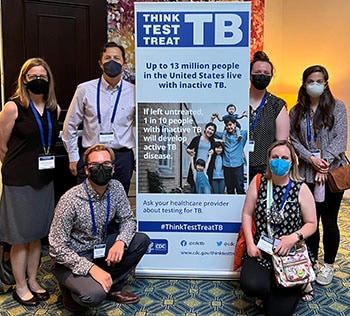
The 2022 National TB Conference (NTCA) hosted an in-person TB conference from May 23 -26, 2022 in Rancho Mirage, California. The theme of the conference was “TB Elimination: Back in Focus.” The agenda for this conference was curated to provide TB-themed content with a refocus on public health and TB. Session topics included new TB guidelines, TB during pregnancy, new arrivals in the United States, as well as specific sessions for clinicians, nurses, and epidemiologists. Dr. Andrew Vernon, former chief of DTBE’s Clinical Research Branch, received the Robert Koch Award, which recognizes an outstanding contribution with a clinical, epidemiological or academic focus by a TB researcher or TB research organization working to eliminate TB. To learn more, visit the conference website.
DTBE Strategic Plan
The 2022-2026 Strategic Plan for DTBE was published in the summer of 2022. To achieve our vision of TB elimination in the United States, this plan builds on the division’s previous work and was updated to reflect our continued commitment to health equity. DTBE views this plan as a living document that will help guide our work through 2026 and look forward to operationalizing the plan with our partners. Our work would not be possible without these important collaborations, and this plan underscores the critical role of partners and stakeholders in achieving our goals.
Reported Tuberculosis in the United States, 2021
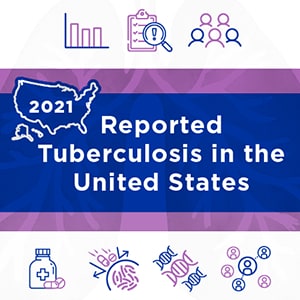
On November 29, 2022, DTBE published Reported Tuberculosis in the United States, 2021. The report describes information on TB disease reported to the CDC since 1993, with an emphasis on TB disease cases counted by the reporting area in 2021, and the effects of the COVID-19 pandemic on TB disease surveillance.
TB Trials Consortium (TBTC) Virtual Meeting
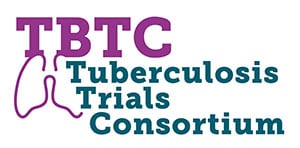
The TBTC Virtual Meeting was hosted from December 1-2, 2022. In addition to the general sessions, the meeting held dedicated forums for laboratorians and study coordinators.
Submitted by Carla Jeffries, JD, MPH
Think. Test. Treat TB Campaign
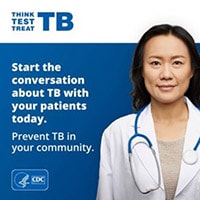
Think. Test. Treat TB activities will be transitioning to a new phase focusing on healthcare providers who serve patients at risk of TB. This phase of the campaign aims to continue and expand the reach of Think. Test. Treat TB to raise awareness of screening recommendations and encourage healthcare providers to test and treat latent TB infection. Activities will include national and targeted outreach through a variety of communication channels, engagement with professional organizations, and collaboration with public health departments, TB clinics, the TB Centers of Excellence, and other partners. To learn more, visit www.cdc.gov/thinktesttreattb.
Submitted by John Parmer, PhD
TB Peer Educator Project

The TB Education and Training Network hosted a webinar on November 17, 2022, to present an innovative project designed to teach high school students about TB. Project leaders Marti Brentnall, Alejandra Pena Velazquez, and Sonia Lira gave an overview of the County of San Diego TB Peer Educator Project, a collaboration between the San Diego County Office of Education’s Work-Based Learning Team and the San Diego County Health and Human Services Tuberculosis Control and Refugee Health Branch. Webinar attendees included TB health educators and trainers from across the United States.
Piloted at San Diego High School in the spring of this year, the TB Peer Educator Project is an eight-week service-learning project currently being implemented at two additional high schools located in communities at high risk of TB in the San Diego area. Based on the county’s health promotion program framework, the curriculum takes a class or club through each step of creating a TB prevention product for teens and young adults, ages 15 -24. In addition to a comprehensive TB 101 presentation, other activities include examining and critiquing current TB prevention campaigns, exploring neighborhood zip code data, brainstorming product ideas, conducting peer surveys, and presenting product pitches before a community panel for additional refinement. The project culminates with a community outreach event that showcases the students’ final products.
Submitted by Peri Hopkins, MPH
Reported Tuberculosis in the United States, 2021 Now Available
On November 29, 2022 CDC published Reported Tuberculosis in the United States, 2021.

In 2020, the annual rate of decline in the TB incidence rate (cases per 100,000 population) was substantially greater than in previous years, probably because of factors associated with the COVID-19 pandemic, including a combination of TB underdiagnosis and a true reduction in incidence.
TB incidence partially rebounded in 2021, which might be explained by a lessening of the effects of the factors associated with the COVID-19 pandemic, as well as delayed detection of cases with symptom onset during 2020 that were not diagnosed until 2021 because of delayed healthcare access or missed diagnoses. Despite the rebound, TB incidence in 2021 remained 12.4% lower compared with 2019, which might be explained by longer lasting effects of the COVID-19 pandemic, including TB underdiagnosis and public health resource constraints. Timely diagnoses of TB disease save lives and prevent spread in our communities.
Key Data Points:
- The reported number of TB cases in the United States increased from 7,171 TB cases in 2020 to 7,882 TB cases in 2021, a 9.9% increase.
- The national TB incidence rate increased from 2.2 cases per 100,000 persons in 2020 to 2.4 cases per 100,000 persons in 2021. Nine states and the District of Columbia reported TB disease incidence rates higher than the national TB disease incidence rate.
- As in past years, cases of TB disease were not evenly distributed across the United States. Four states account for almost half (49.9%) of all reported U.S. TB cases: California, Texas, New York (including New York City), and Florida.
- In 2021, people from racial and ethnic minority groups and non-U.S.–born persons continued to be disproportionately affected by TB disease in the United States, highlighting the persistent health disparities and inequities among people with TB disease.
To support TB education and outreach to clinicians, health care agencies, and community organizations, CDC has created the following materials to highlight findings from the 2021 surveillance report:
- Slide set,
- Social media graphics,
- Infographic, and
- Highlights of Reported Tuberculosis in the United States, 2021.
Read more in a recent Dear Colleague Letter.
Submitted by Pei-Jean Feng, MPH
Tuberculosis Epidemiologic Studies Consortium (TBESC) Cost Effectiveness Analysis
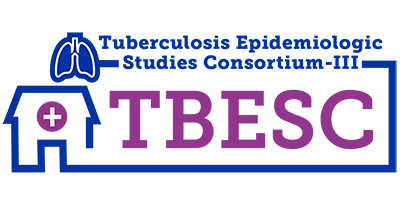
In September 2022, DTBE awarded RTI International the cost effectiveness analysis contract for the Tuberculosis Epidemiologic Studies Consortium III (TBESC-III). The objective of TBESC-III is to use implementation science to identify primary care interventions that are both effective and efficient at increasing latent TB infection targeted testing and treatment. The addition of RTI International to the consortium will provide an estimation of the potential health and economic impacts of TBESC-III clinical care-based interventions. Their work aims to:
- Use new or adapt existing evidence-based economic models that employ comparable and consistent cost-effectiveness methodology to assess the health and economic impacts of implementing TBESC-III clinical care-based interventions.
- Populate these models with the characteristics of primary care populations or clinics targeted for TBESC-III clinical care-based interventions.
- Use sensitivity analyses along with simulation exercises to assess and generate estimated impacts of the TBESC-III clinical care-based interventions according to agreed-upon timeframes.
TBESC looks forward to continuing our work to identify effective and efficient approaches to improve the latent TB infection cascade of care.
Submitted by Kathryn Winglee, PhD
Strengthening Civil Surgeons’ Capacity to Improve Latent TB Infection Surveillance and Outcomes Among Status Adjusters
In October 2022, DTBE launched a new two-year cooperative agreement with four recipients to support the creation of pilot projects to prevent TB disease among status adjusters examined by civil surgeons. The goals are to establish surveillance and improve linkage to care and treatment of latent TB infection for status adjusters.
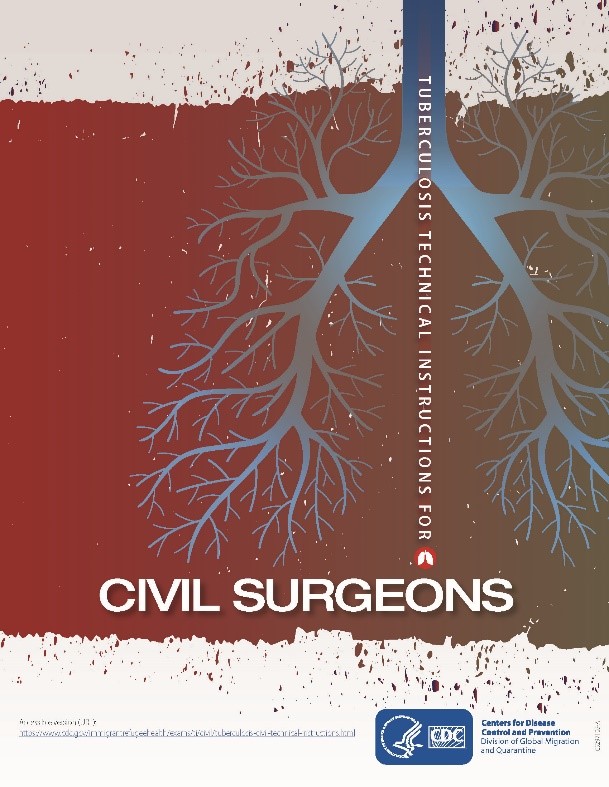
Status adjusters are non-U.S.–born persons living legally in the United States on temporary visas who apply for permanent residency. As part of the process, applicants aged two and older must have a medical examination that includes screening for TB with an interferon gamma release assay (IGRA) blood test. If the IGRA result is positive, a chest radiograph must be performed. Civil surgeons are physicians designated by the U.S. Citizenship and Immigration Services (USCIS) to provide medical examinations, including IGRA testing for status adjusters. Civil surgeons are required to report status adjusters’ positive IGRA results to their local health departments (Tuberculosis Technical Instructions for Civil Surgeons | CDC).
Recipients of the cooperative agreement are:
- California Department of Public Health
- Florida Department of Health
- Minnesota Department of Health
- Williamson County and Cities Health District, Texas
Recipients will (1) engage civil surgeons who commonly report latent TB infection cases; (2) implement interventions to improve treatment initiation and/or completion among status adjusters with latent TB infection; (3) generate pre- and post-intervention latent TB infection care cascades including number of status adjusters (i) tested, (ii) having a positive IGRA result, (iii) receiving a chest radiograph and diagnosis of latent TB infection, (iv) initiating and (v) completing latent TB infection treatment; and (4) submit data to CDC throughout the project. We look forward to working with the recipients to develop sustained collaboration between health departments and civil surgeons to prevent TB among status adjusters.
Submitted by Kathryn Winglee, PhD
National TB Targets from the Evaluation and Health Economics Team
The Evaluation and Health Economics Team in DTBE has developed a webpage to provide additional information on TB Performance Targets and how programs can use them in their work toward TB elimination.
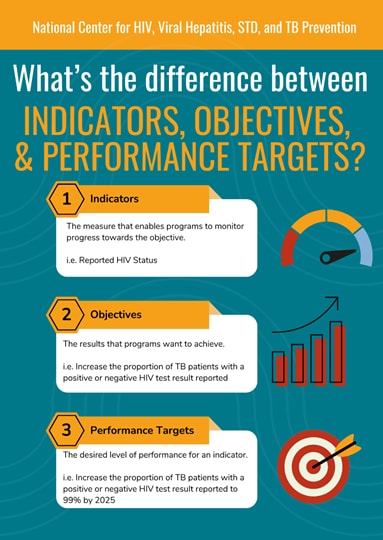
Every five years, CDC updates national performance targets for TB programs. These targets were developed to track U.S. TB program progress toward TB elimination. The 2025 National TB Program Objectives & Performance Targets table lists all current objectives and targets. National TB Performance targets are measurable and aspirational and are intended to be used by TB programs to assess their level of performance in achieving national program objectives. In short, they are longer-term goals to work towards. Targets are set using historical data and do not consider program resources or local TB epidemiology. Programs should aim for steady progress towards achieving targets. While TB programs should make efforts to reach targets, the targets are not annual TB program requirements. Achieving the National Performance Target is a marathon, not a sprint.
Regular performance monitoring and program evaluation can help TB programs understand where they are on the way to the target. Programs can use the National TB Indicators Project (NTIP) as a tool to conduct routine program monitoring. NTIP provides information that is used to show how a program is performing over time and how a program performs in relationship to a target. Monitoring and evaluation can help TB programs identify areas for improvement to assist in achieving the performance targets. Once a TB program understands why it is performing well or perhaps in need of improvement, the program can make changes over time that will move it closer to the target. Additionally, program performance can be used to brief local leadership that might provide additional input and needed resources.
Submitted by Erin Thomas, PhD
Venezuelan humanitarian relief program and TB testing
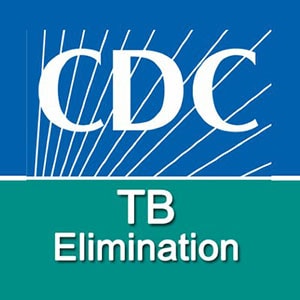
On October 12, 2022, the U.S. Department of Homeland Security (DHS) announced a new process allowing Venezuelan nationals and their immediate family members to come to the United States. The medical requirements are the same as the Uniting for Ukraine program, including TB testing requirements. For more information, read CDC’s Dear Colleague letter.
Submitted by Terry Chorba, MD, DSc, FACP, FIDSA
Laboratory Branch welcomes new branch members

Brian Lynch, Janná Murray, and Chunxia Zhao joined the Laboratory Branch on September 26, 2022. Brian and Janná are part of the Reference Laboratory Team where they will perform CLIA compliant testing for the Molecular Detection of Drug Resistance service. Chunxia is part of the Applied Research Team. Stephanie Swint and Danielle Miller joined the Laboratory Branch on October 9, 2022. Stephanie is part of the Laboratory Capacity Team and Danielle is part of the Reference Laboratory Team.
Brian Lynch has over 20 years of molecular biology laboratory experience with an emphasis on DNA sequencing and genetic analysis. Since December 2020, Brian has been continuously deployed to the Laboratory Task Force for the COVID-19 response, where he has supported SARS-CoV-2 genome sequencing for special studies. Brian earned his B.S. in Biochemistry from Boston College.

Janná Murray, MS, MPH has been with CDC as a contractor since 2011. During this time, she gained substantial experience in molecular biology in her roles as a research biologist with the Chronic Viral Diseases Branch in the chronic fatigue syndrome program and in a multifunctional role within the Influenza Division, as part of the Virology, Surveillance, and Diagnosis Branch Diagnostic Development Team. Most recently, Janná has served as a quality scientist in the Laboratory Preparedness and Response Branch. She earned her B.S. in Biology from the Georgia Institute of Technology, her MPH in Epidemiology from the University of South Florida, and her MS in Microbiology and Cell Science from the University of Florida.

Chunxia Zhao has joined LB’s Applied Research Team where she will primarily focus on research for host-directed therapies. She has been with CDC as an Associate Service Fellow in the Division of HIV Prevention since 2018. In this role, she led various research projects where she developed and improved upon a variety of laboratory methods, and she also served as the Quality Manager for the laboratory. Before joining CDC, Chunxia was a Postdoctoral Fellow at Yerkes National Primate Research Center and she spent 10 years practicing medicine in China. She earned her Bachelor of Medicine from Southeast University in China and her Master of Medicine from the Chinese Academy of Medical Science.

Stephanie Swint joined the Laboratory Branch as part of the Laboratory Capacity Team on October 9, 2022. Stephanie is a certified Medical Technologist with over 10 years of experience. Since 2019, Stephanie has worked in the Division of Healthcare Quality Promotion in the Clinical and Environmental Microbiology Branch. As a member of their Antibiotic Resistant Characterization and Identification Laboratory, she served as the primary contact for Salmonella enterica ser. Typhi, Shigella spp. and Neisseria meningitidis antimicrobial susceptibility testing and for the CLIA Anaerobe Identification Laboratory. Stephanie earned her Bachelor of Art and Science in Biological Science from Mississippi State University and her Bachelor of Science in Clinical Laboratory Sciences from the University of Mississippi Medical Center. She will be pursing her Master of Public Health in Global Health at the University of West Florida.

Danielle Miller joined the Laboratory Branch’s Reference Laboratory Team on October 9, 2022. Danielle is a certified Technologist in Molecular Biology and prior to joining CDC, spent five years in the Georgia Public Health Laboratory (GA PHL). At the start of the COVID-19 pandemic, Danielle became the Associate Health Laboratory Manager/Technical Supervisor for the Emergency Preparedness BioThreat/Molecular Biology department at the GA PHL. In this role, she coordinated daily laboratory operations and up to 30 staff to maintain routine non-COVID testing as well as high-throughput COVID-19 pandemic response testing of up to 4,000 specimens per day. She developed emergency strategies to train staff quickly and competently on various testing platforms while simultaneously validating and implementing new methods. Danielle earned her Bachelor of Science in Microbiology from the University of Michigan.
Submitted by Tracy Dalton, PhD
Hep B United / TB Elimination Alliance Summit
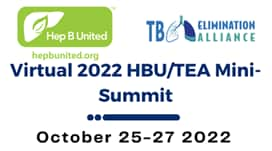
From October 25-27, 2022, Hep B United and TB Elimination Alliance hosted the second joint summit with two themes: “Access To The People, Reaching All Populations, and Adjusting Beyond A Pandemic Focus.” The virtual summit focused on outreach to communities who are disproportionately affected by hepatitis B and TB. Speakers included clinicians, representatives from community-based organizations, and survivors who described their lived experiences with hepatitis B and TB. Learn more about the summit on the TB Elimination Alliance website.
TB Elimination Alliance (TEA) Awards Mini-Grants to Expand Latent Tuberculosis Infection and Tuberculosis Testing, Screening, Treatment, and Prevention
TEA, with the support of CDC, announced that it awarded $310,000 to 14 community health organizations serving Asian, Asian American (A/AA), Native Hawaiian, and Pacific Islander (NH/PI) communities and expanding to non-U.S. born Latino American and U.S. born African American communities that are disproportionately impacted by latent TB infection (LTBI) and/or tuberculosis disease (TB).
The newly awarded mini-grant recipients are as follows:
- Arkansas Coalition of Marshallese (Springdale, AR)
- Asian Pacific Health Foundation (San Diego, CA)
- Colorado Alliance for Health Equity (Denver, CO)
- Healthy Asians & Pacific Islanders Medical Center (Las Vegas, NV)
- Home of Helping Hand, Inc (Lawrenceville, GA)
- La Maestra Community Health Centers (San Diego, CA)
- Micronesian Islander Community (Oregon)
- Polynesian Association of Alaska (Anchorage, AK)
- Saint Paul – Ramsey County Public Health (Saint Paul,MN)
- San Diego County Medical Society Foundation, dba Champions for Health (San Diego, CA)
- Southeast Asian Coalition of Central Massachusetts, Inc. (Worcester, MA)
- Southland Integrated Services, INC (Garden Grove, CA)
- Todu Guam Foundation, Ltd. (Tamuning, Guam)
- Vietnamese American Cancer Foundation (Fountain Valley, CA)
For more information, read the full press release.
Cash-Goldwasser S, Labuda SM, McCormick DW, Rao AK, Petersen BW, Chodosh J, Brown CM, Chan-Colenbrander SY, Dugdale CM, Fischer M, Forrester A, Griffith J, Harold R, Furness BW, Huang V, Kaufman AR, Kitchell E, Lee R, Lehnertz N, Lynfield R, Jacobowitz Marsh K, Madoff LC, Nicolasora N, Patel D, Pineda II R, Powrzanas T, Roberts A, Shah A, Wong JM, Ritter JM, Schrodt CA, Raizes E, Bamrah Morris S, Gold JAW; CDC Monkeypox Clinical Escalations Team. Ocular monkeypox—United States, July–September 2022. MMWR Morb Mortal Wkly Rep 2022;21(42):1343–7.
Haddad MB, McLean JE, Feldman SS, Sizemore EE, Taylor MM. Innovative approaches to COVID-19 case investigation and contact tracing. Public Health Rep 2022. Epub ahead of print.
Meng L, Fast HE, Saelee R, Zell E, Murthy BP, Murthy NC, Lu PJ, Shaw L, Harris L, Gibbs-Scharf L, Chorba T. Using a cloud-based machine learning classification tree analysis to understand the demographic characteristics associated with COVID-19 booster vaccination among adults in the United States. Open Forum Infect Dis 2022;9(9):ofac446.
Murthy N, Saelee R, Patel Murthy B, Meng L, Shaw L, Gibbs-Scharf L, Harris L, Chorba T, Zell E. COVID-19 vaccine initiation and dose completion during the SARS-CoV-2 Delta variant surge in the United States, December 2020–October 2021. Public Health Rep 2022. Epub ahead of print.
Pang AH, Green KD, Chandrika NT, Garzan A, Punetha A, Holbrook SYL, Willby MJ, Posey JE, Tsodikov OV, Garneau-Tsodikova S. Discovery of substituted benzyloxy-benzylamine inhibitors of acetyltransferase Eis and their anti-mycobacterial activity. Eur J Med Chem 2022;242:114698.
Shragai T, Pratt C, Castro Georgi J, Donnelly MAP, Schwartz NG, Soto R, Chuey M, Chu VT, Marcenac P, Park GW, Ahmad A, Albanese B, Totten SE, Austin B, Bunkley P, Cherney B, Dietrich EA, Figueroa E, Folster JM, Godino C, Herzegh O, Lindell K, Relja B, Sheldon SW, Tong S, Vinjé J, Thornburg NJ, Matanock AM, Hughes LJ, Stringer G, Hudziec M, Beatty ME, Tate JE, Kirking HL, Hsu CH; COVID-19 Household Transmission Team. Household characteristics associated with surface contamination of SARS-CoV-2 and frequency of RT-PCR and viral culture positivity—California and Colorado, 2021. PLoS One 2022;17(10):e0274946.
Smith J, Cohen T, Dowdy D, Shrestha S, Gandhi NR, Hill AN. Quantifying Mycobacterium tuberculosis transmission dynamics across global settings: a systematic analysis. Am J Epidemiol 2022:kwac181. Epub ahead of print.
Donnelly MAP, Chuey MR, Soto R, Schwartz NG, Chu VT, Konkle SL, Sleweon S, Ruffin J, Haberling DL, Guagliardo SAJ, Stoddard RA, Anderson RD, Morgan CN, Rossetti R, McCormick DW, Magleby R, Sheldon SW, Dietrich EA, Uehara A, Retchless AC, Tong S, Folster JM, Drobeniuc J, Petway ME, Austin B, Stous S, McDonald E, Jain S, Hudziec MM, Stringer G, Albanese BA, Totten SE, Staples JE, Killerby ME, Hughes L, Matanock A, Beatty M, Tate JE, Kirking HL, Hsu CH; COVID-19 Household Transmission Team. Household transmission of severe acute respiratory syndrome coronavirus 2 (SARS-CoV-2) Alpha variant—United States, 2021. Clin Infect Dis 2022;75(1):e122–32.
Goswami ND, Ashkin D, Haley CA; BAM Project Team. Pretomanid in the treatment of patients with tuberculosis in the United States. N Engl J Med 2022;387(9):850–2.
Pang AH, Green KD, Chandrika NT, Garzan A, Punetha A, Holbrook SYL, Willby MJ, Posey JE, Tsodikov OV, Garneau-Tsodikova S. Discovery of substituted benzyloxy-benzylamine inhibitors of acetyltransferase Eis and their anti-mycobacterial activity. Eur J Med Chem 2022;242:114698. Epub ahead of print.
Pettit AC, Phillips PP, Kurbatova E, Vernon A, Nahid P, Dawson R, Dooley KE, Sanne I, Waja Z, Mohapi L, Podany AT, Samaneka W, Savic RM, Johnson JL, Muzanyi G, Lalloo UG, Bryant K, Sizemore E, Scott N, Dorman SE, Chaisson RE, Swindells S; Tuberculosis Trials Consortium (TBTC) Study 31/AIDS Clinical Trials Group (ACTG) A5349 study team. Rifapentine with and without moxifloxacin for pulmonary tuberculosis in people with HIV (S31/A5349). Clin Infect Dis 2022:ciac707. Epub ahead of print.
To receive the TB Notes Newsletter, enter your email address at the bottom of the TB Notes webpage. If you would like to submit an article or update in TB Notes, please email Kevin Crooks at qyd7@cdc.gov.
You can follow us on Twitter @CDC_TB and Facebook @CDCTB and sign up for email updates through Adobe Campaign.